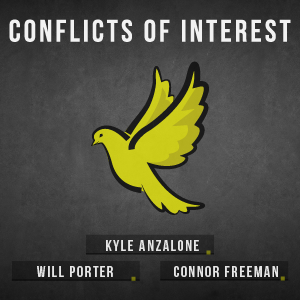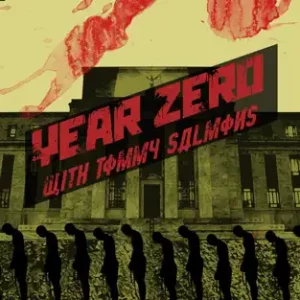Israel resumed its genocidal military operation in the Gaza Strip early on Tuesday, March 18 with a massive overnight bombardment that killed 404 Palestinians before midday, including 263 women and children, according to the Gaza Ministry of Health.
Among the dead were 130 children killed by Israeli airstrikes on shelters where the children were sleeping with their families, according to the UN Children’s Fund (UNICEF).
By Wednesday, at least 436 Palestinians had been killed in strikes across Gaza, two-thirds of whom were women and children.
The resumption of Israel’s indiscriminate bombardment of Gaza follows brazen Israeli violations of a ceasefire agreement with Hamas that went into effect on January 19—one day before the inauguration of President Donald Trump.
The government of Israeli Prime Minister Benjamin Netanyahu also took this action despite Hamas honoring its commitment under phase one of the ceasefire to release thirty-three Israeli hostages captured on October 7, 2023 in exchange for more than 1,700 Palestinian prisoners.
Israel had also agreed under the ceasefire deal to ease its illegal blockade of Gaza and facilitate the entry of six hundred trucks per day of desperately needed humanitarian aid.
Israel’s genocide in Gaza has been perpetrated in retaliation for the killing of about 1,200 Israelis and the kidnapping of 251 people (including foreign nationals) in the October 7 incursion into Israel that Hamas called “Operation Al Aqsa Flood.”
Since then, Israel has killed over 48,577 Palestinians—mostly women and children—and systematically targeted Gaza’s civilian infrastructure, including its health care system, schools, and agricultural lands; 69% of all structures have been destroyed or damaged, including 92% of Gaza’s total housing stock.
As of February 24, according to the Israeli government, 140 hostages had been returned alive since October 20, 2023, when two American citizens, Judith and Natalie Raanan, became the first hostages to be released; seven hostages had been rescued alive by the Israeli Defense Forces (IDF); and the bodies of forty-five deceased hostages had been returned.
With the release of thirty-three hostages in total from the start of the ceasefire on January 19 until Israel’s resumed bombardment on March 18, the number of hostages reportedly still held alive in Gaza was reduced to twenty-four, with thirty-five bodies of deceased hostages also yet to be returned.
On March 2, both parties were supposed to have entered phase two of the ceasefire, which entailed negotiations to work out the details of a broader agreement for a permanent cessation of hostilities, full withdrawal of Israeli forces from Gaza, and return of all remaining hostages.
Instead, Israel chose that day to reimpose its illegal blockade of humanitarian aid, including food, medicines, and fuel—a brazen violation of its obligations under the ceasefire agreement (as well as Israel’s legal obligations under international humanitarian law as the Occupying Power in Gaza).
Israel’s decision to unilaterally end the ceasefire and resume the genocide followed encouragement from President Donald Trump to do precisely that, and the White House immediately confirmed that Israel had consulted with and received approval for its actions from the Trump administration.
The Trump administration, like Joe Biden’s before it, has acted in violation the 1948 Convention on the Prevention and Punishment of the Crime of Genocide (or the Genocide Convention) with its complicity in Israel’s Gaza genocide.
America’s “newspaper of record,” The New York Times, has also performed its typical function of manufacturing Americans’ consent for the longstanding, non-partisan U.S. government policy of supporting Israel’s crimes against the Palestinians.
To that end, the Times has shamelessly mischaracterized what it called a “break down” of the ceasefire in order to facilitate the demonstrably false narrative propagated by the American and Israeli governments that Hamas was the party principally responsible by refusing to negotiate an extension of the agreement.
In truth, the action for which both Netanyahu and Trump blamed Hamas was its refusal to accede to their mutual demand to renegotiate the existing ceasefire. The sin committed by Hamas was to insist on sticking to the original agreement.
It was the Israeli prime minister who chose to violate that ceasefire agreement because genocide-advocating members of his ruling coalition threatened to withdraw their support and force a new election, which would spell the end of Netanyahu’s political career.
Netanyahu’s decision to resume the genocide has divided Israeli society because, although polls have shown that nearly all Israelis support the genocide, many—including families of hostages still held captive in Gaza—have criticized Netanyahu for prioritizing his own political survival and bloodlust over securing the release of their loved ones.
President Donald Trump’s predictable encouragement of Israel’s genocide follows unwavering support for this crime against humanity from the administration of President Joe Biden—a clear demonstration of the non-partisanship of the U.S. government’s criminality.
I extensively documented the U.S. government’s support for the genocide in an article published on March 19 of last year by the Libertarian Institute titled “U.S. Humanitarian Aid to Gaza Is a Cynical PR Ploy.” I followed up on that report with an article for the Institute published on December 5 titled “The World Order Is On Trial at the International Criminal Court,” which was a condensed version of a more highly detailed report that I published on December 11 titled “The Significance of the ICC’s Arrest Warrant for Netanyahu.”
First, I will review key events drawn from that prior research to place the more recent disturbing developments into proper context—and to set the historical record straight. Following that is an examination of how Trump helped achieve a ceasefire just before his inauguration only to subsequently encourage Israel to violate it and resume its genocide.
A Pretense of Concern for Palestinian Civilians
From the start of Israel’s retaliation for the October 7 attacks by Hamas and other armed Palestinian groups, dubbed “Operation Swords of Iron,” prominent Israeli leaders expressed openly genocidal intent in Gaza.
No mere rhetoric, Israel matched the words with actions on the ground—including the imposition of a total siege of Gaza as an act of collective punishment to deny the entire civilian population access to goods and services necessary for their survival.
Within a few weeks of the start of Israel’s operation, scholars of international law, conflict studies, and genocide studies began issuing statements warning of a potential genocide and calling on the international community to act immediately to prevent a crime against humanity in Gaza.
The U.S. government’s response, by contrast, was to encourage Israel while providing the military and diplomatic support necessary for the genocidal intent to be executed.
The Biden administration from the start also engaged in cynical public relations ploys aimed at creating an illusion of concern for the wellbeing of Palestinian civilians.
The first such effort was to urge Israel to slightly ease its siege by allowing in a trickle of humanitarian aid from Egypt through the Rafah border crossing, which the United States then considered sufficient evidence of Israel’s benevolent intent, notwithstanding the continued indiscriminate bombardment and cries from the international aid community—including United Nations agencies—for a full lifting of the siege to prevent an absolute humanitarian catastrophe.
Demonstrating the disingenuousness of its expressed concern for Palestinian civilians, on October 18, 2023 the Biden administration vetoed a draft resolution at the UN Security Council calling for “humanitarian pauses” to allow safe delivery of essential aid.
Calls for the international community to act to prevent a genocide continued to pour forth, including observations about Israel’s use of starvation as a weapon of war; indiscriminate bombardment resulting in the deaths of mostly women and children; and systematic targeting of Gaza’s civilian infrastructure, including its health care system.
On December 8, the U.S. again used its veto power to block a UN Security Council resolution calling for an “immediate humanitarian ceasefire.”
On December 12, President Biden admitted that Israel was engaged in “indiscriminate bombing.”
With international pressure mounting for the United States to cease its support for the genocide, the Biden administration on December 16 requested the Israeli government to also open the Kerem Shalom crossing in southern Gaza, near the border with Egypt, to allow in aid into Gaza from Israel’s side of the 1949 armistice line.
(While typically described as a “border,” the line on the map has never been legally defined as such. It remains an armistice line despite international recognition of the de facto existence of the state of Israel in 78% of the former territory of Palestine since 1948, when most of the land’s indigenous inhabitants were ethnically cleansed from their homes to facilitate the establishment of the Jewish supremacist state.)
The message from the Biden administration to the Israeli government was that it had to make at least a minimal effort not to appear intent on committing genocide.
Meanwhile, American arms kept pouring in, including 2,000-pound bombs being dropped indiscriminately on densely populated residential areas in Gaza such as the Jabaliya refugee camp.
Israel Accused of Genocide at the ICJ
On December 29, 2023, the government of South Africa heroically filed an application with the International Court of Justice (ICJ) accusing Israel of violating the 1948 Genocide Convention.
The White House responded by dismissing the case as “meritless” and “counterproductive”—but without substantively addressing South Africa’s eighty-four pages of documentation of Israel’s war crimes and crimes against humanity, including several pages of statements from Israeli leaders expressing unambiguously genocidal intent.
The unseriousness of the U.S. government’s response was highlighted on January 26, 2024, when the ICJ ruled—in response to a request from South Africa for it to take preliminary measures to protect Palestinian civilians—that Israel was perpetrating a “plausible” genocide.
The ICJ consequently ordered Israel to take all measures within its power to prevent incitement or acts of genocide, including an end to its blockade of humanitarian aid.
The same day the ICJ determined Israel was plausibly committing genocide, the Biden administration demonstrated its disregard for the lives of Palestinian civilians suffering under the indiscriminate bombardment by halting funding for the United Nations Relief and Works Agency for Palestine Refugees (UNRWA), the main organization responsible for delivering and distributing humanitarian aid in Gaza.
The pretext for this suspension of funding was the Biden administration’s acceptance of Israel’s claim that UNRWA employees had participated in the October 7 terrorist attacks in Israel—notwithstanding Israel’s failure to ever present any credible evidence to support that accusation.
Arming Israel
On February 8, 2024, the Biden administration performed another public relations stunt intended to fool American voters into believing that it was taking human rights concerns seriously.
As congressional Democrats were stirring to impose some measure of accountability for Israel’s actions, the White House issued a National Security Memorandum, “NSM-20,” requiring the secretary of state to receive “credible and reliable written assurances from foreign governments” that American arms were not being used in a manner inconsistent with international and U.S. law.
Israel implausibly assured the Biden administration that its starvation policy, indiscriminate bombing, and systematic targeting of Gaza’s civilian infrastructure was consistent with international law—so the American arms kept flowing.
A large group of United Nations independent experts, Human Rights Watch (HRW), Oxfam, and Amnesty International all subsequently issued statements calling for an arms embargo against Israel.
The UN experts reminded how the ICJ had ruled that there was a plausible risk of genocide in Gaza and the need for UN members not to aid and abet war crimes and crimes against humanity. A joint statement from HRW and Oxfam as well as Amnesty’s statement both put the Biden administration on notice that it was violating international law and U.S. law by continuing to arm Israel.
In early May, as Israel was preparing to launch an assault on Rafah, where 1.5 million displaced Palestinians had fled on orders from the IDF, Biden paused a shipment of 2,000-pound MK-84 bombs out of concern for how they would be used to perpetrate war crimes.
On May 10, however, the White House announced that it would not otherwise be halting arms shipments to Israel based on the preposterous conclusion of the State Department that there was insufficient information to conclude that American arms had been used to commit war crimes or that Israel was restricting humanitarian aid deliveries.
At least two State Department officials, Josh Paul and Stacy Gilbert, resigned in protest. As Gilbert stated, to see what was happening on the ground and claim that Israel was not blocking aid was “ludicrous.”
Besides the fact that the entire international humanitarian aid community was crying out for a ceasefire and an end to Israel’s siege to prevent outright famine, the rendered opinion was directly contrary to the State Department’s own Bureau of Population, Refugees and Migration as well as the assessment of the U.S. Agency for International Development (USAID), which had recommend halting arms transfers because of Israel’s “impediments of U.S. humanitarian assistance” during “one of the worst humanitarian catastrophes in the world.”
Having green-lighted its own support for a genocide, the White House moved immediately forward with over $1 billion in new weapons deals for the perpetrator, followed in August by the approval of $20 billion in arms sales including fighter jets and tank ammunition, plus the usual $3.5 billion in annual military aid to Israel—money designated by Congress to serve as an effective taxpayer subsidy to the U.S. military industrial complex.
The Floating Pier Fiasco
On February 20, 2024, as children in Gaza were literally starving to death and newborn babies were dying from malnutrition or lack of access to health care, the Biden administration vetoed another resolution at the UN Security Council calling for a ceasefire aimed at enabling international aid workers to respond effectively to the humanitarian catastrophe underway in Gaza.
In another cynical PR ploy, instead of halting arms shipments to Israel to pressure it into opening all crossings for unimpeded delivery of humanitarian aid, the United States began airdropping shipments—a move that international aid agencies observed was no substitute for delivery of aid at scale through the crossings.
During his State of the Union Address on March 7 last year, President Biden announced a plan for the U.S. military to construct a floating pier off the coast of Gaza to deliver aid by ship. The international humanitarian aid community again cried out that this expensive and inefficient public relations stunt was still no substitute for an end to Israel’s illegal siege.
The U.S. Department of Defense (DoD) promised that the pier would enable the equivalent of 150 truckloads of aid per day into Gaza—far short of the minimum of five hundred to six hundred trucks per day required to meaningfully address the humanitarian crisis. (To put the need into perspective, the average number of trucks delivering aid to Gaza was five hundred per day before October 7, 2023.)
In the end, the pier was operational for just two of its first six weeks with only thirty truckloads per day getting through, and the trickle of aid that did arrive was essentially undistributable because of the continued high risk to aid workers and the lack of security.
At an installation cost to U.S. taxpayers of $230 million, the floating pier fiasco was totally ineffectual for its stated purpose, but it served the truly intended aim of sustaining the illusion of concern from the Biden administration for the plight of Palestinian civilians while green lighting the continuance of Israel’s starvation policy.
The ICC and ICJ Intervene
On May 20, the prosecutor for the International Criminal Court (ICC) requested the court to issue arrest warrants for Hamas leaders Ismail Haniyeh, Yahya Sinwar, and Mohammad Deif, along with Israeli Prime Minister Benjamin Netanyahu and Defense Minister Yoav Gallant, for war crimes and crimes against humanity.
(Unlike the ICJ, the ICC is not a UN body but was established separately by the 1998 Rome Statute. Whereas the ICJ has no enforcement powers and can only issue rulings for the UN General Assembly and Security Council to deliberate upon, the ICC was created to prosecute violations of international law. Sinwar and Deif were both subsequently killed in Gaza, while Haniyeh was assassinated in Tehran, Iran.)
On May 24, the ICJ, acting to protect Palestinian civilians, issued additional provisional measures once again ordering Israel to demonstrate its compliance with the Genocide Convention. To that end, Israel was required to end its siege and halt its military operation in the city of Rafah in southern Gaza, where 1.5 million displaced civilians had fled on orders from the IDF. Rafah was “the last population center in Gaza that has not been substantially destroyed by Israel,” as South Africa noted in its plea to the ICJ to take more action to stop the genocide.
As with its previous preliminary measures, the ICJ’s orders were ignored by Israel despite compliance being a legal obligation arising from Israel’s membership in the United Nations organization, whose charter established the ICJ in 1945 as the world’s highest authority on matters of interpretation and applicability of international law.
Biden’s Ceasefire Hoax
A week after the ICJ ordered Israel to halt its U.S.-backed assault Rafah, on May 31 Biden perpetrated yet another public relations hoax by giving a speech in which he outlined a three-phase ceasefire proposal.
- During phase one, Israel would withdraw its forces from all populated areas in Gaza, allow delivery of humanitarian aid at scale, and release hundreds of Palestinian prisoners, while Hamas would release women, elderly, and wounded Israeli hostages.
- During phase two, there would be an agreement for a permanent cessation of hostilities involving the release of all remaining hostages by Hamas and a complete withdrawal from Gaza by Israel.
- Phase three of the ceasefire would entail a major reconstruction plan for Gaza.
Biden claimed that this proposal had been offered and already accepted by Israel, and all that remained was for it to be accepted by Hamas. That was a brazen lie, but Biden’s hoax narrative was accepted unquestioningly as fact by the complicit mainstream media.
The truth was that the three-phase ceasefire Biden outlined in his speech was similar to one proposed by Hamas back in February, which had likewise called for a permanent peace agreement to be implemented in three phases, the first two phases of which would see the release of all Israeli hostages.
That ceasefire proposal was rejected by Netanyahu, who vowed not to end Israel’s genocide until Hamas was eliminated.
In early May, Hamas again announced its willingness to accept a three-phase ceasefire that would secure the release of all hostages, and again it was rejected by Netanyahu, who continued to oppose a permanent ceasefire.
Hamas’s acceptance and Israel’s rejection of a ceasefire—coupled with the U.S. government’s repeated veto of ceasefire resolutions at the UN Security Council—was creating a public relations nightmare for the Biden administration during an election season.
The solution settled upon by the self-described “Zionist” president of the United States (or rather by his handlers) was to propagate the hoax counternarrative that it was Israel calling for a ceasefire and Hamas rejecting it—all with the aim of facilitating Israel’s continued genocide.
The hoax narrative should have been immediately dispelled when Hamas responded to Biden’s speech by announcing its acceptance of the proposal—whereas the office of the Israeli prime minister issued a statement rejecting it on the grounds that Israel would not end its military operation until “all of its goals are achieved,” including “the elimination of Hamas’s military and governmental capabilities.”
The duplicitous corporate press in the United States, however, were all too willing to perform their usual propaganda function of manufacturing consent for the Biden administration’s complicity in a genocide by uncritically parroting the hoax narrative.
From the Israeli newspaper Haaretz, by contrast, one could learn how the proposal outlined by Biden was “very similar” to the one previously accepted by Hamas but rejected by Israel, and how the government of Israel under Netanyahu’s leadership remained firmly opposed “to any deal that would lead to the end of the war.”
To further cement the grand deception, the U.S. government submitted a draft resolution to the UN Security Council endorsing the ceasefire proposal outlined in Biden’s speech, which was unanimously adopted on June 10 as Resolution 2735.
Because of the U.S. government’s diplomatic cover and military aid, Israel was able continue perpetrating with impunity the world’s first genocide being live streamed on social media.
The Machiavellian nature of the Biden administration’s actions should have been illuminated once again for all to see on November 20, when the United States—for the fourth time—vetoed a ceasefire resolution at the UN Security Council.
Instead, thanks to the servile corporate press acting complicitly in the ongoing genocide, the U.S. government got away with the additional hoax narrative that it could not support the resolution because it called for an “unconditional” ceasefire that ostensibly would have failed to secure the release of Israeli hostages.
The truth is that the draft resolution explicitly endorsed the very same ceasefire proposal that the Biden administration had introduced to the Security Council back in May, which had conditions that the United States claimed were acceptable to Israel and would result in the release of all hostages.
The Biden administration thus effectively reneged on its own feigned support for a ceasefire proposal—for the obvious reason that the ceasefire had always been rejected not by Hamas but by Israel.
Biden’s Arms Cessation Hoax
With the pressure mounting for Biden to take meaningful action to mitigate the humanitarian catastrophe in Gaza, including from his own Democratic support base, the administration proceeded to execute yet another cynical public relations ploy designed to sustain the illusion that the White House was concerned for Palestinian civilians.
In a letter dated October 13 to Israeli Defense Minister Yoav Gallant from the U.S. State and Defense Departments, the Biden administration contradicted its own earlier claim that Israel was not blocking aid by admitting that it was. The letter requested Israel to “demonstrate a sustained commitment” to alleviate the suffering of Palestinian civilians, including by allowing 350 truckloads of aid per day into Gaza.
Failure to meet the criteria within thirty days, the letter stated, “may have implications for U.S. policy under NSM-20 and relevant U.S. law.” In other words, the letter warned that if Israel did not allow in significantly more aid, the United States might halt arms shipments.
Israel was given thirty days to comply—a duration that conveniently put the deadline after the U.S. presidential election.
In a State Department press briefing on November 4, one day before the election, a reporter accurately observed that since the letter was sent, the humanitarian situation in Gaza had worsened instead of improved, and department spokesman Matthew Miller admitted that Israel had failed to comply. He then joked about Israel still having more time before the deadline, prompting laughter in the room by remarking, “it’s not the end of the semester.”
The inquiring journalist then rebuked both the spokesman and his colleagues in the media by rightly objecting, “I suspect that the levity is a little bit inappropriate.”
Israel in fact had reduced the amount of aid it was letting into Gaza, but since the leaked letter was just another propaganda sham to begin with, after the thirty days had passed, the Biden administration declared that it would continue to provide the weapons necessary for Israel to continue its genocide.
The ICC’s Arrest Warrant for Netanyahu
On November 21, one day after the United States had vetoed a fourth ceasefire resolution at the UN Security Council, the ICC finally issued arrest warrants for Benjamin Netanyahu, Yoav Gallant, and Mohammad Deif. (Haniyeh and Sinwar had already been killed, and the court could not verify Israel’s claim that Deif was also dead).
Netanyahu dismissed the warrants as “anti-Semitic.” Biden called the move “outrageous” and reaffirmed his pledge to “always stand with Israel.” The Washington Post curiously lectured that “the arrest orders undermine the ICC’s credibility” for treating “the elected leaders of a democratic country” no differently than “dictators and authoritarians who kill with impunity.”
The Post was thus effectively arguing that the ICC should stick to prosecuting two-bit dictators in Africa because killing with impunity is acceptable as long as those responsible for the mass murder are democratically elected.
Demonstrating the bipartisan nature of the U.S. government’s support for Israel’s crimes against the Palestinians, on February 6 of this year, President Trump issued an executive order imposing sanctions on the ICC in retaliation for what he called “baseless arrest warrants” for the two Israeli officials that warranted the declaration of “a national emergency” to address the “unusual and extraordinary threat to the national security and foreign policy of the United States.”
The world was left to puzzle over how ICC arrest warrants for officials from a country halfway around the world from the United States posed a threat to U.S. national security—or how, in light of the 9/11 terrorist attacks, supporting Israel’s genocide didn’t.
Setting aside the U.S. government’s political blustering, the true significance of the ICC’s arrest warrants for the Israeli prime minister and defense minister is how it demonstrates that the U.S.-dominated so-called “rules-based international order” is itself now on trial.
Conversely to The Washington Post’s apologetics for American-backed atrocities, the choice facing the ICC was to either issue the warrants or destroy its own credibility.
Similarly, the choice facing ICJ with South Africa’s ongoing genocide case is whether to judge Israel guilty of the crime of genocide or render itself irrelevant.
On November 11, 2024, after repeated incidents throughout the prior year of aid convoys coming under Israeli fire, Haaretz reported how the IDF was protecting criminal gangs responsible for looting aid trucks entering through the Kerem Shalom crossing, “even though some of the clans’ members are involved in terrorism, and some are even affiliated with extremist organizations like the Islamic State.”
When Hamas’ civilian police force would intervene to try to stop looters, by contrast, the IDF would attack them.
The Washington Post on November 18 also ran a story about how a network of organized crime had arisen under the IDF’s protection. The article quoted Georgios Petropoulos, the head of the United Nations Office for the Coordination of Humanitarian Affairs (OCHA), describing the area near Kerem Shalom as “the only place in Gaza where an armed Palestinian can come within 150 meters of a tank and not get shot.”
Netanyahu’s PR Hoax to Undermine a Ceasefire
Prime Minister Netanyahu, meanwhile, was exerting such great efforts to undermine ceasefire negotiations that he perpetrated a public relations hoax of his own—with the aim of portraying families of Israeli hostages as gullible dupes who were serving Hamas’s agenda by demanding a ceasefire to secure the release of their loved ones.
Hamas had made its position clear that any ceasefire agreement must result in a full Israeli withdrawal from Gaza, whereas Netanyahu insisted on a continued military presence in a narrow strip of land in Gaza along its border with Egypt called the Philadelphi Corridor.
At a security cabinet meeting on August 29, Defense Minister Yoav Gallant stood alone in opposing Netanyahu’s position of prioritizing a continued military presence in Gaza over securing the release of hostages.
When Strategic Affairs Minister Ron Dermer tried to silence Gallant by saying that the prime minister “can do whatever he wants,” Gallant reportedly retorted, “The prime minister can indeed make all the decisions, and he can also decide to have all the hostages killed.”
Netanyahu removed Gallant from his position on November 5, thus removing the main proponent in the Israeli government for a ceasefire agreement. In Gallant’s place, Netanyahu appointed Israel Katz, who had from the start joined Gallant in advocating the policy of depriving Gaza’s civilian population of goods and services essential for survival, as well as advocating ethnic cleansing in retaliation for the October 7 attacks in Israel.
Then in September, Netanyahu claimed that Israeli intelligence had learned that Hamas leader Yahya Sinwar was planning to escape Gaza with hostages through the Philadelphi Corridor—thus requiring a continued military presence there.
The Israeli military and intelligence communities, however, disavowed the claim, which proved to be a hoax.
The New York Times reported on that scandal but somehow managed to omit the fact that the purported intelligence underlying Netanyahu’s claim had been fabricated.
Instead, the Times characterized the description of “a disinformation campaign” as being a mere claim coming from the prime minister’s “critics.”
The Times also conveniently omitted the fact that these “critics” included the IDF and the families of Israeli hostages who were calling for a ceasefire—and who were the direct targets of the fabricated intelligence aimed at discrediting them for the purpose of undermining the ceasefire negotiations.
It was “a moral low that has no depth,” families told the media, and “a fatal injury to the remnants of trust between the government and its citizens.”
In the end, Hamas leader Yahya Sinwar did not make a cowardly escape from Gaza with hostages. He was instead killed by Israeli forces on October 16. He was found not hiding in a bunker but engaged in combat in Rafah.
The IDF, for some reason, decided to release its drone footage showing Sinwar’s last moments. It shows him slumped in a chair wounded, with a disabled right arm, in a bombed-out home as the drone approaches. Then, in a final act of defiance he musters the strength with his left arm to fling a stick at the approaching drone.
Zionist Extremists Celebrate Trump
On November 5, Republican nominee Donald Trump defeated Democratic nominee Kamala Harris in the presidential election. A perhaps decisive factor in the Democrats’ loss was the Biden/Harris administration’s unwavering support for Israel’s genocide.
Trump hardly offered an alternative for voters on this issue, however.
During his first term as president (2017-2021), the State Department’s Israel embassy was relocated from Tel Aviv to Jerusalem in violation of numerous UN Security Council resolutions forbidding members states from doing so due to Israel’s illegal annexation of East Jerusalem, which under international law remains “Occupied Palestinian Territory.”
Trump made no secret of how that move was aimed at pleasing his support base of Christian Zionists. As he boasted at a rally in August 2020, “We moved the capital of Israel to Jerusalem. That’s for the evangelicals.”
During his first term, Trump also supported Israel’s illegal blockade of Gaza and cut funding the UN Relief and Works Agency (UNRWA), the main humanitarian aid organization operating in Gaza, as a means to pressure Palestinians into surrendering their right to return to the homes from which they were ethnically cleansed by Zionist forces in 1948 to make way for the establishment of the Jewish supremacist state of Israel.
In March of last year, in an interview with the Israeli newspaper Israel Hayom (Israel Today), Trump praised Israel’s ongoing genocide by saying he would have reacted to Hamas’s October 7 attacks “very much the same way.”
He urged Israel to “finish it up,” not out of any concern for Palestinian civilians but because the images being broadcast around the world of bombs pouring down on them was “very badly” hurting Israel’s “public relations.” Trump’s only criticism was how the IDF itself was publishing many such images.
Indeed, Israeli soldiers have gleefully documented their own war crimes on social media.
As soon as he’d won the election, Trump started nominating Zionist extremists to foreign policy positions in his cabinet.
The AP reported how “Jewish West Bank settlement advocates popped bottles of champagne” to celebrate Trump’s win.
Reuters reported how, “After a record expansion of Israeli settlement activity, some settler advocates in the occupied West Bank are looking to Donald Trump to fulfill a dream of imposing sovereignty over the area seen by Palestinians as the heart of a future state.”
Trump’s staff choices “have raised hopes among settlers,” The New York Times noted, and that Israeli annexation of the West Bank “could happen.”
Israeli Finance Minister Bezalel Smotrich hailed Trump’s victory as an “important opportunity” to “apply Israeli sovereignty to the settlements in Judea and Samaria”—meaning to illegally annex illegally constructed Jewish colonies in the Israeli-occupied West Bank.
On March 8, 2025, The New York Times reported how prominent Christian Zionists “who delivered votes to President Trump” were “now pressing him to declare that Israel can claim ownership of the West Bank.”
Trump’s nomination for the ambassadorship to Israel of former Arkansas governor and two-time presidential candidate Mike Huckabee was undoubtedly a cause for celebration among advocates of Israel’s apartheid regime.
Huckabee is a Christian Zionist whose ideology maintains that all the territory of former Palestine belongs to Israel. Joining Jewish extremists in what is called the “far right” in Israel (as though there were still a peacenik left to speak of), Huckabee refers to the West Bank as “Judea and Samaria.”
As a presidential candidate in 2008, he revealed his deep anti-Arab prejudice by saying, “There’s really no such thing as a Palestinian.”
“I think Israel has title deed to Judea and Samaria,” Huckabee said in January 2017 while standing in front of a “Build Israel Great Again” banner in an Israeli settlement in the illegally occupied West Bank.
“There are certain words I refuse to use,” he proclaimed. “There is no such thing as a West Bank…There’s no such thing as a settlement…There’s no such thing as an occupation.”
“All Hell Will Break Out”
On December 2, President-elect Donald Trump said in a post on his Truth Social platform that if Hamas did not release all hostages by the time of his inauguration on January 20, “there will be ALL HELL TO PAY in the Middle East.”
“I’m the best friend that Israel ever had,” Trump boasted in an interview on January 6. When asked what he meant about there being “all hell to pay,” he reiterated, “If those hostages aren’t released by the time I get to office, there will be hell to pay. I don’t think I have to go into it anymore.”
With the Biden administration’s ostensible efforts to negotiate a ceasefire getting nowhere because of Netanyahu’s adamant refusal to accept one, on January 7, Trump again said of the hostages still held captive in Gaza, “If they’re not back by the time I get into office, all hell will break out in the Middle East.”
“It will not be good for Hamas and it will not be good, frankly, for anyone,” Trump added. “All hell will break out. I don’t have to say anymore, but that’s what it is.”
Trump dispatched his Middle East envoy and former real estate developer Steven Witkoff to Doha, Qatar, to participate with Biden’s team in ceasefire negotiations. From there, on Friday, January 10, Witkoff called the office of the Israeli Prime Minister to request a meeting the following day. According to Haaretz, when told that it was the Sabbath and that Netanyahu would be happy to meet after nightfall, the Jewish Witkoff “explained to them in salty English that Shabbat was of no interest to him.” Netanyahu then complied with the demand for an earlier meeting, after which Witkoff returned to Qatar “to seal the deal” for a ceasefire.
On January 13, Haaretz also reported a breakthrough in ceasefire negotiations as a result of Witkoff’s meeting with the respective directors of Israel’s intelligence agency Mossad and its internal security agency Shin Bet.
Another Haaretz article the same day explained that the Israeli prime minister had shifted his attitude toward a ceasefire, with “secret talks” underway to reach an agreement before Trump’s inauguration.
Whereas Netanyahu had previously assessed that agreeing to a ceasefire would collapse his ruling coalition, his new outlook was that Smotrich and Ben-Gvir “will not be quick to bring down the government due to estimates that the Trump administration will be sympathetic to settlers and the opportunity to again bring up with the administration the question of annexing West Bank settlements.”
The same day, Netanyahu met with Smotrich and Ben-Gvir, who were set to vote against accepting the ceasefire. Smotrich came away denouncing the agreement, but as reported by Haaretz:
“Smotrich’s statement, however, didn’t address the critical issue, namely whether he regards it as a reason to quit the coalition. If he does leave, he will drag Ben-Gvir with him, and the government will fall. If he simply opposes the deal, his opposition will be meaningless—just airtime on radio shows.”
As Haaretz observed of Netanyahu the following day, “It would come as no surprise to anyone if he is telling his reluctant and sulking ministers, ‘Don’t worry, the cease-fire won’t hold.’”
Primarily as a result of Trump’s ostensible “pressure,” the acceptance of a ceasefire by both Hamas and Israel was announced by President Biden on January 15.
In his statement, Biden emphasized that the agreement followed “the precise contours” of the ceasefire proposal he had outlined more than seven months ago—when he lied that the agreement had been accepted by Israel but not Hamas.
One could again turn to the Israeli media to be reminded how the ceasefire finally accepted by Netanyahu was one that he “had repeatedly rejected over the past half year.”
With the clear understanding that Netanyahu had no intention of honoring the ceasefire agreement through its second phase, his security cabinet voted to approve the agreement on January 17.
Keeping up appearances, Israeli National Security Minister Itamar Ben-Gvir resigned on January 19 to ostensibly protest Netanyahu’s acceptance of the ceasefire. Finance Minister Smotrich, however, did not—thus ensuring Netanyahu’s political survival.
(Following Netanyahu’s resumption of Israel’s genocidal military operation on March 18, Ben-Gvir announced his intention to return to the government.)
Although the ceasefire agreement was reached while President Joe Biden was still in office, Trump and his Middle East envoy Steve Witkoff were widely credited with having “pressured” Netanyahu to accept the deal.
However, no evidence ever emerged to support that narrative, apart from Witkoff’s insistence that Netanyahu meet with him on the Sabbath.
In a report about Witkoff’s efforts, The Wall Street Journal observed the key factor explaining Netanyahu’s reversal.
“[T]he agreement on the table had changed little in eight months,” but “Netanyahu had strengthened his governing coalition, making it less likely to be toppled by right-wing opposition to a deal.”
As Yair Rosenberg rightly observed in The Atlantic, “it’s not that Trump had a stick with which to beat Israel that Biden didn’t have; it’s that his presidency holds out the prospect of carrots that Biden would never offer. It was less the president-elect’s pressure than his potential promise that brought the Israeli far right onside.”
As Rosenberg further noted, one “carrot” implicitly offered to Israel was the Trump administration’s implicit—if not explicit—support for illegal annexation of the West Bank, as indicated by Trump’s nomination of former Mike Huckabee to serve as his ambassador to Israel.
“The Riviera of the Middle East”
Almost immediately upon taking office, Trump began offering Israel a second “carrot” by proposing to assist Israeli extremists in their openly declared goal of ethnically cleansing Gaza to make way for Jewish settlements.
According to a report in Israel Hayom, in November 2023, Netanyahu himself had instructed his cabinet to examine ways of “diluting the Gaza population to the minimum possible.”
Suggesting that Israel had succeed in its aim of rendering Gaza uninhabitable, Donald Trump on January 25 described Gaza as “literally a demolition site” and suggested that “we just clean out that whole thing”—meaning that the Palestinians should be expelled to Egypt and Jordan.
That proposal was naturally met with the enthusiastic approval of Israeli Finance Minister Smotrich, who called it an “excellent idea” that would make way for Jewish settlers.
Itamar Ben-Gvir reacted with an X post:
Donald, this looks like the beginning of a beautiful friendship
— איתמר בן גביר (@itamarbengvir) February 4, 2025
On February 4, standing beside Netanyahu during a joint press briefing at the White House, Trump again proposed ethnic cleansing by saying that Gaza “should not go through a process of rebuilding and occupation” by the Palestinians, who had “lived a miserable existence there.” Instead, he said, the Palestinians should be relocated “to other countries of interest with humanitarian hearts”—a quality in which both Israel and the United States were evidently lacking.
Describing Gaza again as “a demolition site” and “a hellhole,” Trump proclaimed,
“The U.S. will take over the Gaza Strip, and we will do a job with it, too. We’ll own it and be responsible for dismantling all of the dangerous unexploded bombs and other weapons on the site—level the site and get rid of the destroyed buildings, level it out.”
Once the population was removed and the rubble cleared, Trump said, the U.S. would turn it into “an economic development” that he described later in the briefing as “the Riviera of the Middle East.”
Trump was also asked whether he supported Israeli annexation of the West Bank, to which he replied, “We haven’t taken a position on it yet”; but his administration would “be making an announcement probably on that very specific topic over the next four weeks.”
Sitting beside a grinning Netanyahu in the Oval Office, Trump was asked to clarify how many Palestinians he was proposing to permanently relocate. He replied, “All of them.”
The New York Times remarked how this reflected Trump’s “shared goal” with Israeli extremists for “the takeover of Palestinian land.”
Times columnist Michelle Goldberg astutely observed that by delivering the message to the Israeli government that the United States “will countenance the ethnic cleansing of Gaza so long as America gets a prime piece of oceanfront property at the end of it,” Trump had granted Israel “extraordinary new license to crush Palestinians in Gaza, and maybe in the West Bank as well.”
Trump had given Netanyahu the “invaluable gift” of “extending a lifeline to his government,” commented Dr. Shira Efron, director of policy research at the Israel Policy Forum, in a Times opinion article.
Trump’s proposal to expel Palestinians from Gaza had been “welcomed enthusiastically by two extreme-right politicians who had been threatening to make Mr. Netanyahu’s coalition government collapse.” It had dispelled the Israeli left’s fantasy and the right’s fears “that the American president would impel Mr. Netanyahu to commit to the second phase of the cease-fire agreement.”
In other words, Trump was giving Israel an unambiguous green light to resume its genocide—a fact that the Times would subsequently feign amnesia about.
On February 6, Trump elaborated on his idea for taking over Gaza by posting to Truth Social:
When asked on Fox News whether Palestinians would have a right to return to Gaza after its reconstruction, Trump replied, “No, they wouldn’t.”
On February 10, Trump reiterated his proposal by saying, “Think of it as a big real estate site, and the United States is going to own it.” As for the Palestinians who had survived Israel’s genocidal assault, they would have to have “a permanent place” to settle outside of Gaza.
On February 25, Trump posted an AI-generated video to his Truth Social network of what was portrayed as “Trump Gaza.” The video featured images of a luxury beach resort replete with a scene of Trump and Netanyahu lounging together on beach chairs, soaking up the sun in swimsuits and drinking cocktails.
“You are DEAD”
According to the ceasefire agreement, during the six weeks of phase one, Hamas would release thirty-three hostages—women, children, men over age fifty, and the sick or wounded—in exchange for more than 1,000 Palestinians prisoners. The IDF would redeploy its forces eastward, away from populated areas to a “buffer zone” along the border, and Palestinians displaced from northern Gaza would be allowed to return. Israel would also end its siege and facilitate the entrance into Gaza of six hundred trucks carrying humanitarian aid per day.
On the sixteenth day of phase one, negotiations were to begin to finalize the details of phase two, which would also last six weeks and result in a permanent cessation of hostilities, a full withdrawal of Israeli forces from Gaza, and the release of all remaining Israeli hostages in exchange for more Palestinian prisoners.
Following that would be the third phase of Gaza’s reconstruction.
On January 19, as the ceasefire went into effect and displaced Palestinians began returning to what was left of their homes, The New York Times described Gaza as a “wasteland” where “dense neighborhoods had been reduced to pancaked slabs of concrete, the roads turned to dust.”
As the Times also explained:
“Itamar Ben-Gvir, the far-right national security minister, resigned in protest from the cabinet and withdrew his Jewish Power party from the coalition on Sunday. The Religious Zionism party, led by Bezalel Smotrich, has suggested it could do the same unless Mr. Netanyahu continues the war of the initial [phase of the] truce. If it does so, Mr. Netanyahu’s government would hold fewer than half of the seats in the Knesset, Israel’s Parliament, which could eventually force the government to fall and force new elections.”
In other words, if Netanyahu were to adhere to the ceasefire agreement and enter phase two, his government would collapse—which would spell the end of his political career.
Just as soon as the ceasefire went into effect, Netanyahu made clear to Ben-Gvir and Smotrich that he intended to violate it. According to a Haaretz article titled “Netanyahu Is Lying to Trump and Preparing to Sabotage the Gaza Cease-fire Deal”:
“Netanyahu promised both that the cease-fire he signed is only temporary and that, soon enough, he will order to renew the war—and by doing so, sacrifice the lives of about half of the living hostages currently held in Gaza.”
This isn’t some conspiracy theory spread by Netanyahu’s opponents and critics. These are words coming directly from his own loyalists and supporters.
The most dubious assertion in that article, arguably, was the headline’s assumption that Trump was not in on the deception.
Three weeks into the ceasefire, on February 9, under the headline “Israeli Sources Believe Netanyahu Intends to Derail Gaza Cease-fire as Delegation Heads to Doha,” Haaretz reported how Netanyahu “intends to sabotage the hostage release deal” by refusing to comply with Israel’s obligation to enter phase two negotiations.
“Netanyahu is signaling quite clearly that he doesn’t want to move to the next phase,” one government source told Haaretz. “He’s sending a team without a mandate and without the ability to do anything…Netanyahu knows he doesn’t have a government if he proceeds with the deal.”
As Jeremy Scahill reported for Drop Site News on February 10:
“Since the ceasefire officially went into effect on January 19, Israel has continued to carry out targeted attacks inside the Gaza Strip on an almost daily basis. According to the Gaza Ministry of Health, more than 110 Palestinians have been killed in such attacks over the past three weeks.”
According to Scahill, Netanyahu had told his cabinet the previous month that he had received letters from both Biden’s and Trump’s teams “ensuring that Israel could resume the war in Gaza with minimal justification.”
Schahill quoted Netanyahu describing Trump’s “vision” to ethnically cleanse Gaza “revolutionary” and “creative.” Netanyahu also said that it was being discussed and that Trump was “very determined to carry it out.” Trump’s determination, the Israeli prime minister said, “opens up many opportunities for us.”
Three weeks into the ceasefire, halfway through phase one, Trump provided Netanyahu with an explicit green light to violate the agreement and resume its genocide. On Monday, February 10, he said that “if all of the hostages aren’t returned by Saturday at 12 o’clock,” then “I would say, cancel it and all bets are off and let hell break out.”
Netanyahu responded, according to The New York Times, by warning “that Israel would resume fighting if hostages were not released on Saturday.”
On Twitter/X, Itamar Ben-Gvir illuminated what that would entail:
להודעה של חמאס צריכה להיות תשובה אחת במציאות: מתקפת אש אדירה על עזה, מהאוויר והיבשה, לצד עצירה מוחלטת של הסיוע ההומניטרי לרצועה, כולל החשמל, הדלק והמים, וכולל הפצצת חבילות הסיוע שכבר הוכנסו ונמצאים בידי חמאס בעזה. חייבים לחזור למלחמה ולהשמיד!
— איתמר בן גביר (@itamarbengvir) February 10, 2025
That translates to “a massive fire attack on Gaza, from the air and land, alongside a complete halt to humanitarian aid to the Strip, including electricity, fuel, and water, and including the bombing of aid packages that have already been brought into and are in Hamas’ hands in Gaza. We must return to war and destroy!”
The New York Times on February 11 dutifully played its part to manufacture consent for a resumption of the genocide by facilitating the narrative from Trump and the Israeli government that Hamas was violating the ceasefire.
“Hamas threatened to derail the agreement on Monday night,” the Times stated in its third paragraph, “warning that it would delay the release of some hostages on Saturday if Israel did not send more aid to Gaza.”
That made it sound as though Hamas was demanding more from Israel than had already been agreed upon, as though Hamas were threatening to violate the agreement unless its new demands were met. Not until about halfway through the article did the Times offer a glimpse of reality:
“The current standoff stems partly from Hamas’s accusation that Israel has not upheld its promises for the first phase of the cease-fire.
Israel was required to send hundreds of thousands of tents into Gaza, a promise that Hamas says Israel has not kept.
Speaking on the condition of anonymity to discuss a sensitive matter, three Israeli officials and two mediators said that Hamas’s claims were accurate.
So why didn’t the third paragraph of the Times article state that the party who had “threatened to derail the agreement” was Hamas instead of Israel?
The Times also noted near the end of the article how there was a “widespread perception” that Netanyahu “is undermining the negotiations” by first having “delayed sending a team to Qatar” for talks on phase two that were supposed to have already begun and then sending a team whose mandate was “only to listen, not to negotiate.” The Times described this as creating the “perception” that Netanyahu “was playing for time rather than trying to extend the truce.”
Never mind that the “perception” was true.
It is instructive that the third paragraph of the Times article did not similarly describe the claimed threat by Hamas to “derail the agreement” as merely the “perception” of Israeli and U.S. government officials.
The Israeli newspaper Maariv, by contrast, reported the IDF’s own admission that Hamas “has not violated the agreement” and “has no interest in returning to combat.”
As reported by Jeremy Scahill, Drop Site News obtained a copy of a report delivered by Hamas officials to mediators from Qatar and Egypt listing “a wide range of Israeli violations of the Gaza ceasefire,” including “the killing of civilians, repeated ground and air incursions, the beating and humiliation of Palestinian captives during their release and the deportation of some without their consent, and the denial of humanitarian aid.”
For instance, the agreement was for fifty fuel trucks per day to enter Gaza, whereas fewer than twenty-five were allowed, and the entry of commercial fuel was blocked entirely; 200,000 tents were supposed to have been delivered, but barely 53,000 had been allowed; and no medical supplies had been allowed.
While Trump and Netanyahu had threatened a full resumption of war, “it was Israel’s nearly daily breaches of the deal that prompted Hamas to announce it would postpone the next release of Israeli captives.”
In response to these violations, Hamas had issued the statement:
“Hamas is committed to the ceasefire agreement if the occupation is committed to the agreement. We confirm that the occupation is the party that did not abide by its commitments, and it bears responsibility for any complications or delays.”
On Saturday, February15, the Times kept up the façade by reporting how Hamas freed three more Israeli hostages that day, “prolonging a fragile cease-fire” that “appeared to be teetering only days ago.”
The agreement “seemed at risk of crumbling,” the Times stated, “when Hamas threatened to delay the hostage release” and “accused Israel of violating the truce agreement, including by not sending sufficient tents and other aid into Gaza.”
Again, why was it not the case, according to America’s “newspaper of record,” that the ceasefire was at risk of crumbling because Israel was violating it?
On March 2, Israel again brazenly violated the ceasefire by reimposing its siege of Gaza, blocking the entry of all humanitarian aid.
Again proving its journalistic malfeasance, The New York Times shamelessly lied that the ceasefire had “expired”—thus completely absolving Israel of responsibility for having violated it.
Twisting the facts to facilitate Trump and Netanyahu’s agenda of resuming the genocide, the Times characterized Hamas as the intransigent party for having refused to agree to “Israel’s proposal for an extension, which it attributed to the U.S. envoy to the region, Steve Witkoff.”
The Times quoted Netanyahu saying that the reimposition of the siege was because of “Hamas’s refusal to accept the Witkoff outline for continuing talks, to which Israel agreed.”
It was untrue, of course, that the ceasefire had “expired.” What had rather expired was the agreed duration of phase one. The only mention the Times made of the second phase was its remark that “Israel and Hamas have struggled to move from the first phase of the cease-fire, which expired on Saturday, into a second, more comprehensive phase as the deal initially called for.”
The key piece of context disgracefully omitted by the Times—and it strains credulity to presume that the omission was unintentional—was that the whole reason why phase two negotiations had not proceeded according to plan was because Netanyahu had refused to keep that agreement.
Whereas the Times was characterizing Hamas as having refused to negotiate an “extension” to an “expired” ceasefire, the truth was that Israel was violating that very ceasefire by demanding that Hamas renegotiate its terms but without having to keep up its end of the bargain to release Palestinian prisoners, fully withdrawal from Gaza, and permanently cease hostilities.
What the Times characterize as intransigence from Hamas was the group’s insistence that Israel stick to the agreement.
One could again turn to the Israeli media for more honest reporting. As the Times of Israel observed, the reason for Hamas’s refusal to accept the ultimatum was its insistence “that the deal proceed with phase two, which Israel has largely refused to negotiate for the past month.”
Contrasting with The New York Times’ reporting was an article from the British newspaper The Guardian that rightly explained how Israel had sought “to change ceasefire deal,” whereas “Hamas said it was committed to the originally agreed ceasefire that had been scheduled to move into a second phase.”
The Guardian also quoted Israeli minister Bezalel Smotrich praising Netanyahu’s violation of the agreement as “an important step in the right direction.” Referencing Trump’s earlier threat to unleash “hell” on Gaza, Smotrich stated, “Now we need to open these gates as quickly and deadly as possible on to the enemy, until complete victory.”
The following day, The Guardian reported how Israel was preparing a “hell plan” to pressure Hamas into accepting its ultimatum to give Israel what it wanted without any commitment by Israel to uphold its end of the original deal.
The “hell plan” called for cutting off all electricity and water supplies and again ethnically cleansing northern Gaza “to pave the way to the potential resumption of full-scale war.”
Defense Minister Katz had already instructed the IDF to prepare to “unleash hell.”
The New York Times’ inexcusably servile reporting was also contrasted with that from the AP, which appropriately explained in a lead paragraph how Israel was proposing “what it said was a new U.S. ceasefire plan” that it was “trying to force Hamas to accept” by “imposing a siege on the Gaza Strip.”
As the AP also disclosed, Netanyahu was referring to the “hell plan” as the “Witkoff proposal”—Israel had “fully coordinated” the plan’s execution with the Trump administration.
Three days after Israel violated the ceasefire agreement by reimposing its starvation policy in accordance with Witkoff’s “hell plan,” Trump stated on Twitter/X that he was already “sending Israel everything it needs to finish the job.”
Making clear that he understood the “job” to be a genocide, Trump called on Hamas to “leave Gaza” while explicitly threatening to hold the civilian population responsible for any refusal by Hamas to release remaining hostages:
“‘Shalom Hamas’ means Hello and Goodbye – You can choose. Release all of the Hostages now, not later, and immediately return all of the dead bodies of the people you murdered, or it is OVER for you. Only sick and twisted people keep bodies, and you are sick and twisted! I am… pic.twitter.com/88EjVAyWAe
— President Donald J. Trump (@POTUS) March 5, 2025
Donald Trump’s Genocide
The end of the ceasefire was announced by the office of Israeli Prime Minister Benjamin Netanyahu in a Twitter/X post on Monday night, March 17, which was early Tuesday morning in Tel Aviv. The message stated that Netanyahu and Defense Minister Israel Katz had instructed the Israeli Defense Forces (IDF) to “take strong action against the Hamas terrorist organization in the Gaza Strip” following “Hamas’s repeated refusal to release our hostages, as well as its rejection of all of the proposals it has received from US Presidential Envoy Steve Witkoff and from the mediators.”
The bombing commenced just before 2:30 a.m. local time. Echoing Trump, Katz threatened to open the “gates of hell” if Hamas insisted on sticking to the original terms of the ceasefire instead of agreeing to Israel’s new demands.
Hamas denounced the move by saying, “Netanyahu and his extremist government are making a decision to overturn the ceasefire agreement, exposing prisoners in Gaza to an unknown fate.” A senior Hamas official said that Netanyahu’s decision amounted to a “death sentence” for remaining hostages, who were otherwise to be handed over to Israel during the second phase of the ceasefire.
The Government Media Office in Gaza responded, “These brutal massacres committed by the Israeli occupation army reaffirm that this occupation only understand the language of killing, destruction, and genocide.” The statement described Israel’s violence as “a premeditated plan to continue committing genocide against children and women, as seen on the ground.”
The Israeli prime minister’s decision to resume the genocide was protested by many Israelis, including families of hostages who have been critical of Netanyahu’s policy of prioritizing his own political survival and destruction of Gaza’s inhabitants over securing the release of Israeli hostages.
“Today Netanyahu did not open the gates of hell on Hamas,” objected Einav Zangauker, whose son Matan remained a hostage in Gaza, and who had been a fierce critic of Netanyahu’s opposition to the ceasefire. “He opened the gates of hell on our loved ones.”
Many Israelis took to the streets in Jerusalem and in Tel Aviv on March 18 to protest Netanyahu’s decision to undermine the best hope of securing the survival and release of all remaining hostages.
Despite Israel’s violation of the ceasefire and resumption of hostilities, Hamas continued to act with restraint. “Hours after Israel launched a massive bombing campaign across Gaza on Tuesday,” The New York Times reported, “Hamas’s military wing had not mounted a discernible counterattack.”
“Hamas doesn’t want an escalation, but it will not surrender,” said Ibrahim Madhoun, a Palestinian analyst from Gaza whom the Times described as “close to Hamas.”
Once again demonstrating its willingness to facilitate the narrative that Hamas was to blame for refusing Israel’s new demands, a New York Times headline read “Israel Resumes Strikes on Gaza, Killing Hundreds, as Cease-Fire Breaks Down”—thus refusing to attribute the ceasefire’s “break down” to Israel for having violated it.
The lead paragraph described Israel’s “deadly aerial attacks across the Gaza Strip” as “ending” the ceasefire, but that measure of honesty was nullified by the Times’ description of the ceasefire as having been “temporary”—as though a permanent cessation of hostilities were not baked into its terms.
Worse, the article’s third paragraph misleadingly stated that Israel’s attacks “came after weeks of fruitless negotiations aimed at extending the fragile cease-fire”—as though the talks were not fruitless precisely because Israel was refusing to negotiate and instead was threatening to “unleash hell” on Gaza.
Further absolving Israel of responsibility, the Times said in the same paragraph that the first phase of the ceasefire “expired in early March, but it had largely held as diplomats worked to broker an extension to free the surviving Israeli hostages and end the war”—as though Netanyahu’s team had been negotiating phase two in good faith, and as though Israel hadn’t already brazenly violated the deal by re-imposing its siege of Gaza on March 2 to pressure Hamas into accepting its ultimatum.
The Times additionally prioritized Israel’s own propaganda narrative by reporting how Netanyahu had “said he had ordered the military operation after Hamas’s ‘repeated refusal’ to release the remaining captives”—as though the agreement had been for Hamas to return all hostages during phase one.
The Times thus left its readers with the impression for most of its article that the “break down” of the ceasefire was largely due to intransigence on the part of Hamas. Nowhere did the Times acknowledge the fact that Hamas had upheld its part of the agreement.
The deception was reinforced a bit further into the article by relaying Israel’s narrative that its decision to resume hostilities was made “after Hamas rejected two proposals by Steve Witkoff, President Trump’s Middle East envoy”—as though the “hell plan” had not itself strayed from the terms of the agreement.
The Times described the Trump administration as having merely “appeared” to support Israel’s resumption of hostilities, noting the White House’s acknowledgement of having been “consulted” beforehand—as though Trump hadn’t openly encouraged Israel to violate the ceasefire agreement.
The idea that “Israel had brazenly overturned the truce” was characterized merely as a claim “argued” by “Hamas officials.”
Not until the twenty-eighth paragraph of the article did the Times provide its readers with any hint of the truth that Hamas had honored its part of the agreement by releasing “more than 30 hostages” during phase one.
But even there, the Times persisted in mischaracterizing the situation by falsely claiming that “Israel and Hamas had been trying to reach an agreement on the second phase of the truce.”
The second phase of the ceasefire agreement was not even mentioned by the Times until the twenty-ninth paragraph. There, the newspaper disclosed that “Israeli forces were to fully withdraw from Gaza and Hamas was to release the surviving hostages”—which left readers to deduce for themselves that Hamas was insisting on the original agreement.
Not until the thirtieth paragraph did the Times disclose in passing that the reason Hamas and Israel “have not been able to agree on the second phase of the cease-fire” was because Israel was “still vowing to destroy Hamas.” But to make it sound as though Hamas bore equal blame, the Times added that the group had “largely refused to disband its armed battalions”—as though that was a requirement of the ceasefire agreement.
Not until the thirty-first paragraph did the Times introduce the idea that Netanyahu had “avoided a viable agreement with Hamas to end the war and free more hostages to preserve his political coalition”—but this was characterized as merely a complaint from Netanyahu’s “critics.”
Then the Times quoted former U.S. ambassador to Israel Daniel B. Shapiro admitting how “Netanyahu’s politically driven refusal to proceed with Phase 2 of the cease-fire” had “led to this escalation,” while equally blaming “Hamas’s insistence on holding on to hostages”—as though Hamas had not honored its commitment under phase one of the agreement.
The overall impression the Times thus left for its readers was that Hamas deserved at least equal blame as Israel for the “break down” of the ceasefire.
The Times’ indefensible reporting was contrasted with that of the AP, which truthfully reported in a headline, “Israel breaks ceasefire with surprise airstrike, killing more than 400 Palestinians.”
The lead paragraph of the AP article truthfully stated how Israel’s “surprise bombardment” had “shattered a ceasefire in place since January.”
By persistently refusing to tell its readers the truth, The New York Times has made itself also complicit in the Gaza genocide.
The genocidal intent of Israeli leaders has been announced unambiguously since the start of its starvation policy and military operations in October 2023. To dispel any possible doubts, on Wednesday, March 19, Israeli Defense Minister Israel Katz again reiterated the intention to unleash hell on the civilian population of Gaza by demanding that they choose between ethnic cleansing or genocide.
As Katz stated in a video message addressed to the “Residents of Gaza,”
“Evacuation of the population from combat zones will soon resume. If all Israeli hostages are not released and Hamas is not kicked out of Gaza, Israel will act with force you have not known before.
Take the advice of the US President: return the hostages and kick out Hamas, and new options will open up for you including relocation to other parts of the world for those who choose. The alternative is destruction and total devastation.”
U.S. President Donald Trump and former President Joe Biden should both now join Israeli Prime Minister Benjamin Netanyahu in being sought under an ICC arrest warrant for complicity the crime of genocide while the world awaits the judgment of the ICJ that Israel has been perpetrating a, American-backed genocide in Gaza. If the ICJ ultimately fails to do so, it will expose once and for all the fraudulency and sheer hypocrisy of the U.S.-dominated “rules-based international order.”
















